




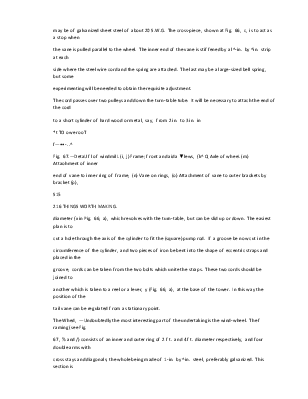
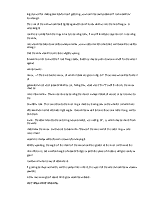
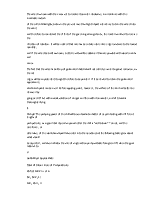
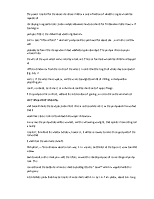

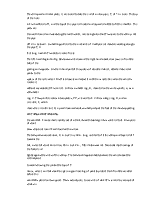
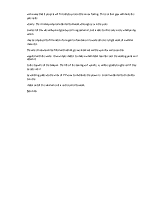
Раздел XI. Ветряные мельницы
ALTHOUGH requiring thoroughly sound work-Xxmonship, the construction of a windmill is not a very difficult nor an unduly expensive undertaking ; i^d it is, therefore, rather surprising that this interesting motor should have received so little attention from amateur engineers.
The uncertainty of wind power is, of course, the chief reason why it is not more frequently made use of . The wind, however, blows with greater regularity than is often supposed, and a mill seldom need be idle for more than two or three days on end.
There is an old saying that '^ 'tis money makes the mill to go;" and there is little doubt that, if the state of trade
demanded it, the oldnstyle windmill could grind for some 3,000 hours per annum, which presupposes that the
wind velocity is not below 14 or 15 miles an hour during that number of hours.
But for pumping, or even for charging accumu-206 THINGS WORTH MAKING.
lators, a 10-mile breeze is not to be despised, in spite of the fact that its energy is less than one-third that of a 15-mile breeze. In favourable situations a wind velocity of not less than 10 miles per hour will probably prevail for
at least 4,000 hours per annum. Calms of two or three dajns* duration are not uncommon, but a week without
wind is exceptional.
Theoretically, the power of a windmill varies in the same ratio as that of the wind—^namely, as the cube of the
velocity of the latter; actually, however, the available power of the mill will tend to increase more nearly as the
square of the wind's velocity, for the reason that the speed of the former cannot be permitted to exceed certain
limits.
The sail surface of a wind motor is more ef f iciently dis]>osed in the long, narrow sweeps of the old-fashioned
four-armed windmill than in the closely placed vanes of the modem wind-engine; but the latter type is more
suited to pumping, as it starts more easily, and will run in lighter winds—^and is more compact i^d of slower
speed. A mill of the second type has, therefore, been chosen for description.
For the wind-wheel a diameter of 5 feet is i»x>-posed—a size which should develop approximately one-twelf th
of a horse-power in a 16-mile wind, at about 160 revolutions per minute. If it be
Elg. 66.—DeUiU of windmOL (a) Of loerml view : tail tamed U " (A) DeUib of tail (c)CnM-piM4.
a08 THINGS WORTH MAKING.
desired to make a larger or smaller mill, it is hardly necessary to point out that the power will be proportionate
to the square of the diameter of the wind-wheel.
In the design which follows, the use of castings has been avoided, as it seems a waste of labour to make
somewhat complicated patterns when only one set of castings is likely to be required; and, further, the
machining would present dif f iculties unless a good-sized lathe were available. The materials are consequently
limited, as far as possible, to timber and wrought iron, in forms easily obtainable.
The Totver. —By reference to Fig. 65, a, it will be seen that the tower is composed of four uprights of 2-in. by 2-in. stuf f , with 2-in. by 1-in. bracings and girts, the whole being fastened together with |-in. bolts, f itted with
washers of ample size. Good, sound yellow deal will answer the purpose, but pitch-pine would be preferable
where expense is not a serious consideration.
A height of about 12 feet is shown, but this must, of course, depend upon circumstances. The bottom of the
wind-wheel should be at least 2 feet above any trees or buildings in its vicinity, so as to avoid eddies in the wind.
In this country exposure to the S.W. , W. , and N.W. has usually to be considered in the order named, but it is
obviously almost equally important that the wind should f low as
Fig. 66.—Details of windmilL
210 THINGS WORTH MAKING.
f reely away f rom a windmill as towards it. If the tower require to be higher than shown, the cant of the sides
should be continued at the same angle, in order to broaden the base, the extended portion being well braced.
In some cases, a short tower f rom the roof of a workshop or other building may answer the purpose, but it need
hardly be said that the higher the wheel the better, as the wind i& retained by the surface of the ground.
The woodwork of the tower should be thoroughly well painted with at least three coats, the priming being
composed of white lead with a little red lead added. All joints should be well coated before being put together,
Уважаемый посетитель!
Чтобы распечатать файл, скачайте его (в формате Word).
Ссылка на скачивание - внизу страницы.